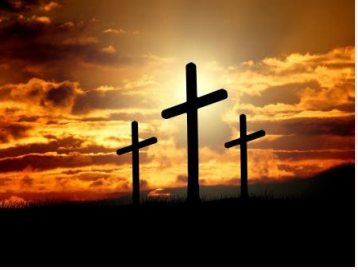Easter – by Niroshan de S Wijeyeratne
Source:Dæhæna – Radio 4EB Sri Lankan Group – Monthly e-Newsletter – April 2022
 What is Easter? Without a doubt one of the most important celebrations in the Christian calendar, Easter is a holiday that celebrates the Resurrection of our Lord Jesus Christ. After his crucifixion, death, and burial, three days later, He rose from the grave. By this, He conquered death and redeemed us from sin. If you have visited the holy land
What is Easter? Without a doubt one of the most important celebrations in the Christian calendar, Easter is a holiday that celebrates the Resurrection of our Lord Jesus Christ. After his crucifixion, death, and burial, three days later, He rose from the grave. By this, He conquered death and redeemed us from sin. If you have visited the holy land
you will notice this grave resting besides the Church of the Holy Sepulchre in Jerusalem. The earliest recorded observance of an Easter celebration comes from the 2nd century, though the commemoration of Jesus’ Resurrection
probably occurred earlier. This year Easter is celebrated on Sunday, April 17, 2022.
In the Christian calendar, Easter follows Lent, the period of 40 days (not counting Sundays) before Easter, which traditionally is observed by acts of penance and fasting. Easter is immediately preceded by Holy Week, which includes Maundy Thursday, the commemoration of Jesus’ Last Supper with his disciples; Good Friday, the day of his Crucifixion; and Holy Saturday, the transition between Crucifixion and Resurrection. Liturgically, Easter comes after the Great Vigil, which was originally observed sometime between sunset on Easter Saturday and sunrise on Easter Sunday. Later it would be celebrated in Christian churches on Saturday evening, then on Saturday afternoon, and finally on Sunday morning. In 1955 the Roman Catholic Church set the time for the vigil at 10 PM, which allowed for the Easter mass to be celebrated after midnight
By the 4th century the Easter vigil was well established in various liturgical expressions. It was characterised by a spirit of joyful anticipation of the Resurrection and—because of the belief that Jesus’ Second Coming would occur on Easter—the return of Jesus. In the Roman Catholic tradition the vigil has four parts: the celebration of lights focused on the Paschal candle; the service of lessons called the prophecies; the administration of the sacraments of baptism and confirmation to adult converts; and the Easter mass. The use of the Paschal candle, to denote the appearance of light out of darkness through the Resurrection, was first recorded in the year 384; by the 10th century it had gained general usage. The prominence of baptism at Easter goes back to early Christianity, probably the 4th century, when baptism was administered only once a year, at Easter. In the Roman Catholic service the priest blesses the water to be used in the forthcoming year for baptism, with the faithful taking some of that water with them to receive protection from vicissitudes.
Easter customs
The use of painted and decorated Easter eggs was first recorded in the 13th century. The church prohibited the eating of eggs during Holy Week, but chickens continued to lay eggs during that week, and the notion of specially identifying those as “Holy Week” eggs brought about their decoration. The egg itself became a symbol of theResurrection. Just as Jesus rose from the tomb, the egg symbolises new life emerging from the eggshell. In the Orthodox tradition eggs are painted red to symbolize the blood Jesus shed on the cross. The custom of associating a rabbit or bunny with Easter arose in Protestant areas in Europe in the 17th century but did not become common until the 19th century. The Easter rabbit is said to lay the eggs as well as decorate and hide them. We celebrate Easter because God lived the life we should’ve lived, and died the death we deserved to die so that we could live. What a wonderful cause for celebration. That we can experience the resurrection with Him!
Niroshan de S Wijeyeratne

Niroshan de S Wijeyeratne is currently a Financial Advisor with Leggett Accountants
with over 40 years of experience in Financial Markets.







